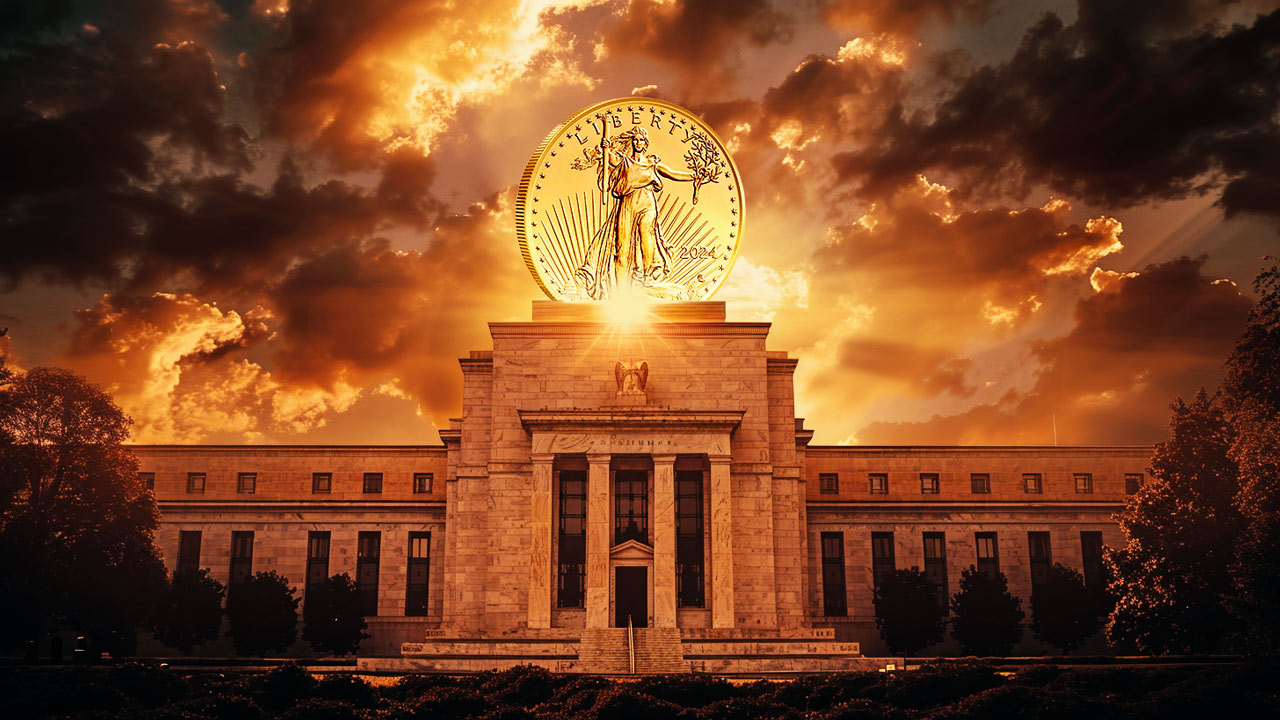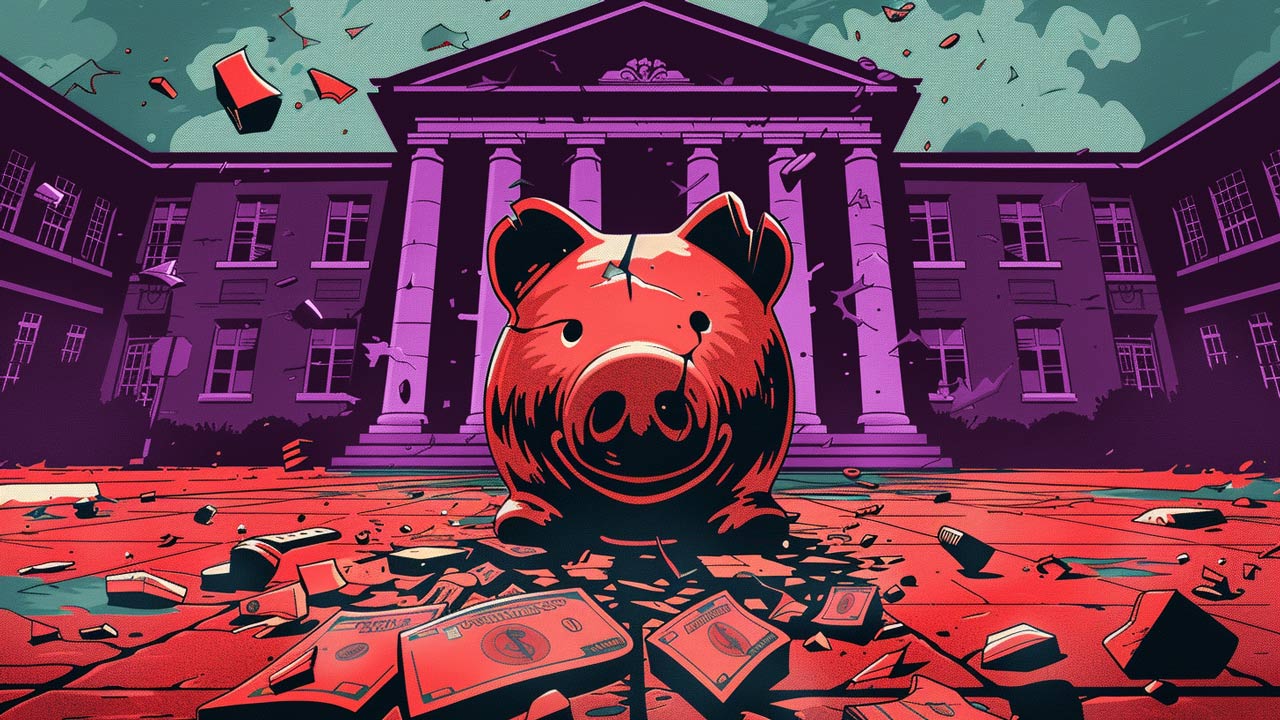The Inflation Picture Is Even Worse Than Government Numbers Suggest
On an annual basis, the Consumer Price Index (CPI) increased by 4.9% in April. While that’s an improvement over last year, it’s still not good. It’s more than twice the Federal Reserve inflation target. And as Peter Schiff pointed out during a recent interview with Jesse Kelly, the reality is even worse than the numbers indicate.
You basically have to double the official numbers to get a better idea of what’s actually happening with prices. So, if the government says they’re up 4.9%, they’re probably up closer to 9.8%. That is a better read on what Americans are struggling with.”
So, is the government lying to us?
Not exactly.
In fact, government officials don’t have to lie about price inflation. They’ve created a rigged CPI formula that does the lying for them.
In a nutshell, the CPI formula is deeply flawed and significantly understates price inflation.
The Bureau of Labor Statistics (BLS) calculates CPI by analyzing the price of a “basket of goods.” Theoretically, the change in the total price of those goods over time will give you a pretty good indication of whether or not prices are rising or declining in the economy.
But obviously, the actual items the government chooses to put in that basket have a big impact on the final CPI number.
Think about it this way. If you fill up a basket with groceries and I fill up another basket with groceries, the total price could be wildly different. For instance, imagine if I filled my cart up with expensive cuts of meat and you filled yours up with all of the store’s buy-one-get-one-free items.
Under the current formula, 10.9% of the CPI is based on durable goods (computers, automobiles, appliances, etc.). Nondurable goods (primarily food and energy) make up 26.6% of CPI. Services account for the remaining 62.5% of the basket. This includes rent, healthcare, cellphone service, etc.)
Again, the things the government includes and excludes from the basket can make a profound difference in that final CPI number.
Back in 1998, the government significantly revised the CPI metrics. Even the Bureau of Labor Statistics admitted the changes were “sweeping.”
In effect, it was like putting less expensive things in the cart and then telling us, “Hey, look, price inflation isn’t so bad after all!”
According to the BLS, periodic changes to the CPI calculation are necessary because “consumers change their preferences or new products and services emerge. During these occasions, the Bureau reexamines the CPI item structure, which is the classification scheme of the CPI market basket. The item structure is a central feature of the CPI program and many CPI processes depend on it.”
The BLS’ rationale isn’t unreasonable. But it’s easy to see how the process can be abused. The government agency can easily manipulate the basket to make price inflation look better or worse than it actually is. Since inflation (increasing the money supply) benefits the government by propping up its “borrow and spend” policies, it’s not hard to figure out which way the bias will lean.
The BLS has adjusted the CPI calculation multiple times, including big adjustments in the 1980s and the 1990s.
The most recent change was in 1998, when the BLS followed the recommendations of the Boskin Commission, a committee appointed by the Senate in 1995. Initially called the “Advisory Commission to Study the Consumer Price Index,” its job was to study possible bias in the computation of the CPI. Unsurprisingly, it determined that the index overstated inflation — by about 1.1% per year in 1996 and about 1.3% prior to 1996. The 1998 changes to CPI were meant to address this “issue” by ensuring the formula consistently spits out a smaller number.
In effect, the government cooked the books.
That makes it comparing CPI today with CPI in the 1970s and 1980s virtually impossible. It’s like comparing apples and oranges. But as Schiff pointed out, you can basically double today’s CPI in order to figure out what it would be using the older formula.
ShadowStats has charts that show CPI based on the older formulas. Currently, based on the 1980 alternative, the CPI is somewhere in the neighborhood of 12%.
Changing the formula is not the only way the BLS can manipulate CPI data. It built in all kinds of geometric weighting, substitution and hedonics into the calculation. These measures are all purely subjective. And by subjective, I mean the government number-crunchers make them up. By manipulating the numbers in the formula, the government can basically create an index that outputs whatever it wants.
Consider the way the Fed calculates housing prices.
“Owners’ equivalent rent of residences” (ORE) is supposed to reflect the costs of homeownership. It contributes nearly 25% of the overall CPI. But this number has consistently understated the rise in housing prices.
ORE is supposed to reflect the amount of money a homeowner would have to pay in rent to live in the same house. The BLS determines this number in a survey, asking homeowners, “If someone were to rent your home today, how much do you think it would rent for monthly, unfurnished and without utilities?” It is literally nothing more than the opinion of the homeowner. It has virtually no correlation to the actual cost of the home.
“Rent of primary residence” is the government’s estimate of rental costs and it makes up 7.6% of the overall CPI. This is also determined via survey. It asks renters the following question: “What is the rental charge to your [household] for this unit including any extra charges for garage and parking facilities? Do not include direct payments by local, state or federal agencies. What period of time does this cover?”
The problem with this measure should be obvious. It tells you how much the current renter pays, but it does not reveal how much the landlord would charge a new renter moving in today. The number understates rising rents, especially in periods of sharp increases.
The Bureau of Labor Statistics does try to account for this discrepancy using a complex formula. (The BLS even admits it’s complex, saying “The sample design of the Housing Survey is fairly complex.” But the bottom line is both OER and the rent calculation in the CPI are made-up numbers. They are calculated using made-up formulas plugging in numbers from random surveys. It’s no wonder they don’t reflect reality.
This is why Schiff said you need to at least double the official numbers to get a real sense of how much prices are rising. Keep this in mind every time you hear some government official or talking head on MSNBC gushing about how inflation is cooling. It’s only cooling from white-hot to red-hot — if that.





 With the AI boom and green energy push fueling fresh copper demand, and with copper mines aging and not enough projects to match demand with supply, the forecasted copper shortage has finally arrived in earnest. Coupled with persistently high inflation in the US, EU, and elsewhere, I predict the industrial metal will surpass its 2022 top to reach a […]
With the AI boom and green energy push fueling fresh copper demand, and with copper mines aging and not enough projects to match demand with supply, the forecasted copper shortage has finally arrived in earnest. Coupled with persistently high inflation in the US, EU, and elsewhere, I predict the industrial metal will surpass its 2022 top to reach a […] America’s trust in its institutions has rapidly eroded over the past 20 years. We have a lower level of trust in our judicial system and elections than most European countries. Some of this is natural, as Americans are uniquely individualistic, but much of it arises from repeated government failures.
America’s trust in its institutions has rapidly eroded over the past 20 years. We have a lower level of trust in our judicial system and elections than most European countries. Some of this is natural, as Americans are uniquely individualistic, but much of it arises from repeated government failures. Decades of negative interest rate policy in Japan have ended. That could mean the end of the $20 trillion “yen carry trade,” once one of the most popular trades on foreign exchange markets, and a chain reaction in the global economy. The yen carry trade is when investors borrow yen to buy assets denominated in […]
Decades of negative interest rate policy in Japan have ended. That could mean the end of the $20 trillion “yen carry trade,” once one of the most popular trades on foreign exchange markets, and a chain reaction in the global economy. The yen carry trade is when investors borrow yen to buy assets denominated in […] With a hot CPI report casting a shadow of doubt on the likelihood of a June interest rate cut, all eyes are on the Fed. But they’ve caught themselves in a “damned if they do, damned if they don’t” moment for the economy — and the news for gold is good regardless.
With a hot CPI report casting a shadow of doubt on the likelihood of a June interest rate cut, all eyes are on the Fed. But they’ve caught themselves in a “damned if they do, damned if they don’t” moment for the economy — and the news for gold is good regardless.  It’s no secret that the American public is wildly ignorant of many issues that are central to the success of our nation. Just a generation ago it would have been unthinkable that less than half of the American population could recognize all three branches of government. America is in most cases far less educated about its government […]
It’s no secret that the American public is wildly ignorant of many issues that are central to the success of our nation. Just a generation ago it would have been unthinkable that less than half of the American population could recognize all three branches of government. America is in most cases far less educated about its government […]